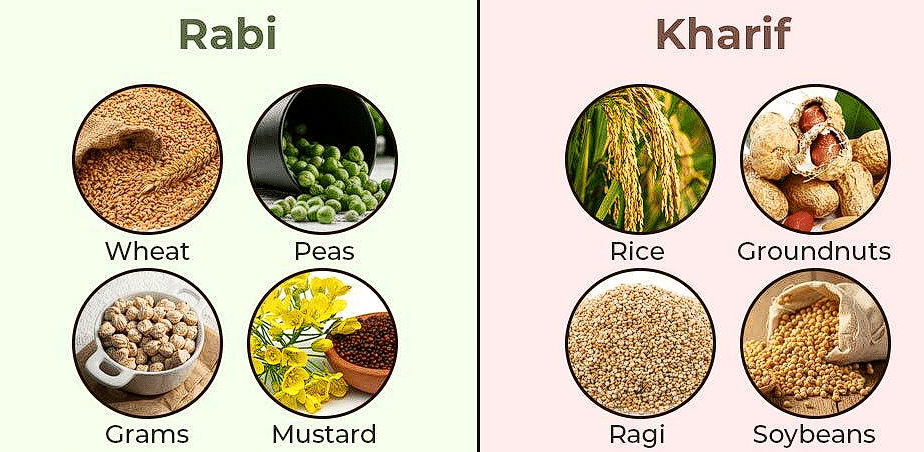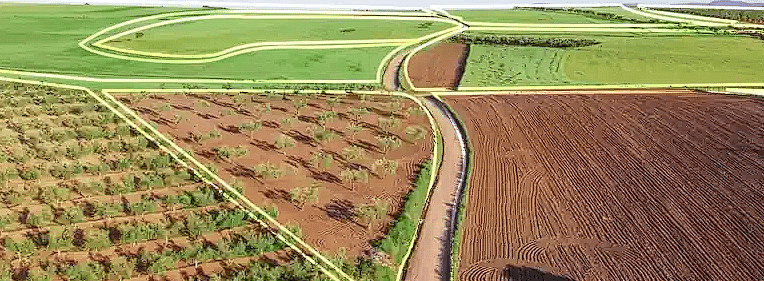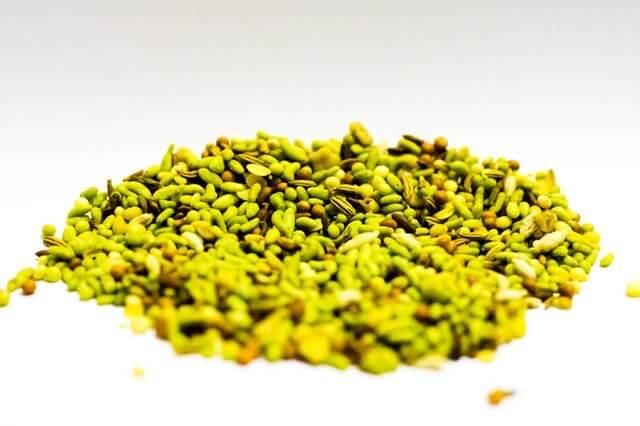Class 9 Economics Chapter 1 Question Answers - Economics
Q1. What was the major impact of electricity on the farmers of Palampur? Explain.
Ans: The arrival of electricity in Palampur significantly improved the farming practices in the area. Its major impacts include:
- Enhanced Irrigation: Electric-run tubewells replaced traditional methods, allowing farmers to irrigate much larger areas of land.
- Increased Efficiency: The use of electric harvesters has made crop harvesting faster and more efficient.
- Widespread Adoption: Initially installed by the government, farmers soon began to set up their own tubewells, leading to extensive irrigation across the cultivated land.
Q2. What is the basic aim of production? What are the essential four requirements for production?
Ans: The basic aim of production is to create the goods and services that we desire. The four essential requirements for production are:
- Land and other natural resources like water, forests, and minerals. Labor, i.e. people who would do the work.
- Each worker provides the labour necessary for production.
- The third requirement is physical capital, i.e. variety of inputs required at every stage during production.
- The fourth requirement is knowledge and enterprise to be able to put together land, labour and physical capital and produce an output.
Q3. What do you mean by working capital? How does it affect the day-to-day activities in farming?
Ans: Working capital refers to the funds available for day-to-day operations in farming. It includes:
- Raw materials: Items like seeds, fertilizers, and pesticides.
- Cash on hand: Money needed for immediate expenses such as wages and maintenance.
Working capital is essential for: Purchasing necessary inputs for farming. Paying labourers and ensuring smooth operations.
Higher working capital allows farmers to: Buy more seeds and fertilizers. Employ more workers, leading to increased production.
Q4. What do you mean by Rabi crops and Kharif crops? When are they sown and harvested? Give examples also.
Ans: (a) Rabi crops: Rabi crops are grown in the winter season (between October to December) and harvested in the spring season (between mid-late April to mid-late June).
Examples: Potato, wheat, barley, mustard are Rabi crops.
(b) Kharif Crop: Kharif crops are sown in the rainy season (from July to September) and harvested in the autumn season.
Examples: Jowar and Bajra, Sugarcane, Cotton, Red Chillies, etc.

Q5. What is the difference between multiple cropping and modern farming method?
Ans: (a) Multiple Cropping- To grow more than one crop on a piece of land during the year is known as multiple cropping. For example, sugarcane is sown along with wheat in the winter season as sugarcane is harvested once every year.

(b) Modern farming methods- are the use of improved methods and techniques to be used in agriculture to increase yield per hectare. The use of HYV seeds, insecticides, pesticides, electric tubewell etc. is a modern farming method.

Q6. Modern farming methods require the farmers to invest more cash than before. Why? Explain.
Ans: Yes, modern farming methods like the use of HYV seeds, chemical fertilizers, electric tubewell for irrigation require higher investment in farming because they carry a higher cost than traditional ones.
HYV seeds need more water and also chemical fertilizers and pesticides to produce the best results. Higher use of chemicals causes environmental degradation also.
Q7. What was the major disadvantage associated with HYV seeds? Explain.
Ans: Major disadvantage associated with HYV seeds are as follows:
- The biggest disadvantage associated with HYV seeds is the bigger requirement of water and also chemical fertilizers and pesticides to produce the best results.
- Higher yields are possible only from the combination of HYV seeds, irrigation, chemical fertilizers, pesticides, etc.
 HYV Seeds
HYV Seeds - Chemical fertilizers and pesticides degrade our environment killing necessary bacterias in soil.
- Poor farmers could not afford HYV seeds due to the increased requirement of fertilizers and machinery.
- New machinery replaced manual labour leading to unemployment and rural-urban migration.
Q8. What are the various farming and non-farming activities in village Palampur?
Ans. (i) Farming Activities
- Farming is the main production activity in Palampur. About 75% of the people depend upon farming for their livelihood.
- They use methods of multiple farming and modern farming techniques to increase their productivity.
- Well-developed irrigational facilities and the use of HYV seeds have improved in production levels of agriculture in Palampur.
(ii) Non-Farming Activities
- Non-farming activities in Palampur include dairy farming small-scale manufacturing units, shop-keeping, and transportation activities. Milk is transported to nearby and far of towns.
- Family members, without hired labours, run small manufacturing units with simple techniques shop keepers buy various goods from wholesale markets in cities and sell them in villages.
- Road transport facilities include rickshaws, tongs, jeeps, tractors, trucks, and bullock carts.
Q9. What do the scientific reports indicate about modern farming methods? Mention any three points.
Ans: Scientific reports indicate that modern farming methods have overused the natural resource base:
- The green revolution, due to the increased use of chemical fertilizers, has led to the loss of soil fertility.
- The use of groundwater with due help of tubewells for irrigation has reduced the level of groundwater.
- The use of chemical fertilizers resulted in the loss of soil fertility. Therefore, farmers are forced to use more and more chemical fertilizers to achieve production levels which in turn raises the cost of production.
Q10. What are the sources of irrigation in Palampur?
Ans: Palampur holds a well-developed system of irrigation. Due to the introduction of electricity irrigation system transformed from Persian wheels to electric-run tubewells. Initially, the first few tubewells were installed by the government, and then by mid-1970s, the entire cultivated area of 200 hectares was irrigated by privately installed tubewells.
Q11. What is Green Revolution? Which crop has benefitted the most due to Green Revolution?
Ans: Green Revolution is a revolution of using modern farming methods for higher yield and achieving self-sufficiency in the production of wheat and rice. It includes the use of High Yielding Variety (HYV) seeds, irrigation, chemical fertilizers, pesticides, etc. for producing the best results. Wheat has benefitted most due to Green Revolution.
Q12. What problems do farm labourers face in terms of employment? Explain any three problems.
Ans: Problems faced by farm labourers are:
- Inadequate wages: The government has fixed the minimum wages as Rs 60 per day but they do not usually get this amount of money.
- Availability of labour: Too much availability of labour forces the labourers to work on lower wages.
- Duration of employment: Laborers are sometimes employed on the daily wages and sometimes for the whole year. They do not have a surety of a job.
Q13. Explain any three modern farming methods.
Ans: Use of HYV seeds: The use of High Yielding Variety seeds promises a larger quantity of production of food grains.
Use of farm machinery: Use of machinery for irrigation, harvesting, threshing, etc improves the quality of work as well as reduces time consumption.
Use of chemical fertilizers and pesticides: The use of chemical fertilizers and pesticides ensure the farmers about the better upbringing of crops in quality and quantity.

Q14. Many factors are responsible for the poor economic condition of farm labourers like Dala and Ramkali. Can you explain a few of these factors?
Ans: The factors responsible for the poor economic conditions of farm labourers like Dala and Ramkali are:
(i) Use of modern farming techniques
- The use of modern farming techniques makes it difficult for farm labourers to get work. Tractors are used for ploughing, harvesters for harvesting, threshers for threshing, and weedicide for removing weeds.
- This leaves very less or no work for farm labourers.
- Due to heavy competition for work among the farm labourers, people agree to work for lower wages.
- The minimum wages for a farm labourer set by the government is Rs 60 per day but they are generally paid only half of it. This forces them to take a loan from local money lenders which put them in the vicious circle of poverty.
|
55 videos|635 docs|79 tests
|
FAQs on Class 9 Economics Chapter 1 Question Answers - Economics
| 1. What are the main features of the village of Palampur as described in the chapter? |  |
| 2. How does agriculture play a crucial role in the economy of Palampur? |  |
| 3. What are the different types of farming practiced in Palampur? |  |
| 4. How do small-scale industries contribute to the livelihood of the people in Palampur? |  |
| 5. What challenges do the farmers in Palampur face? |  |

















